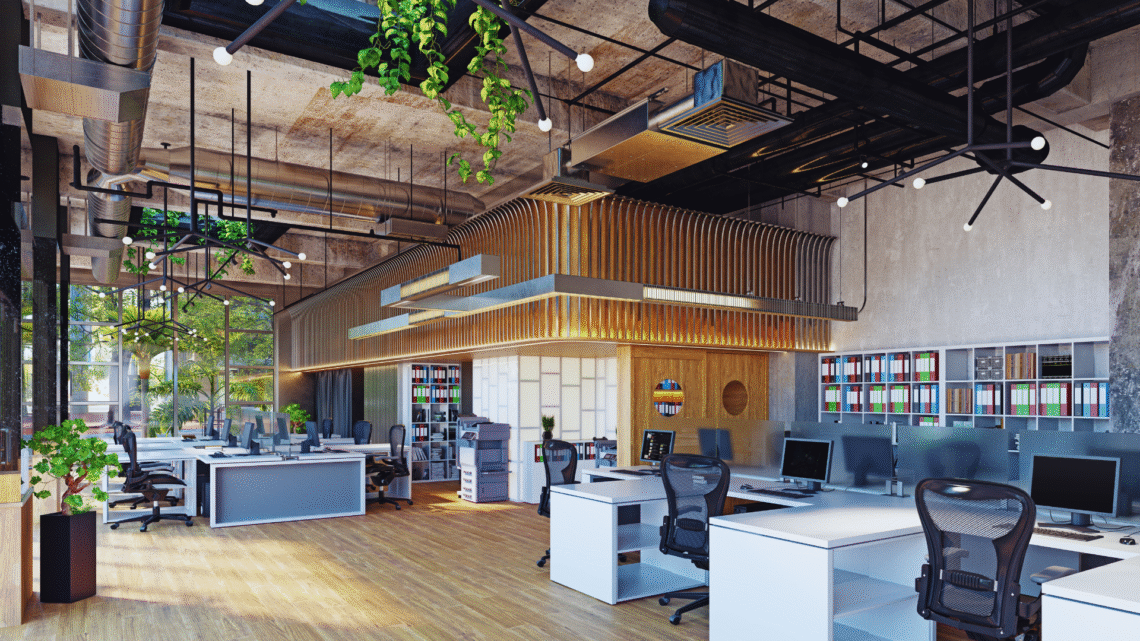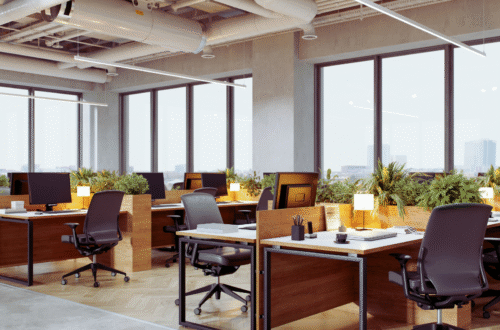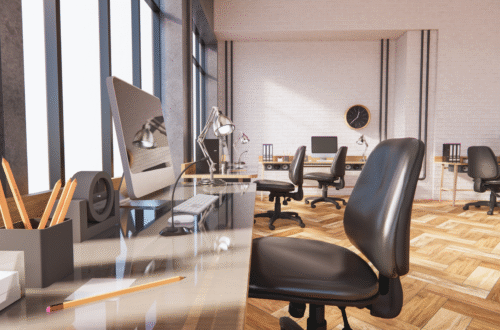
The Best Colour Schemes for Increasing Focus and Creativity in Your Office Environment
Choosing the right colour scheme in an office space can significantly influence productivity, creativity, and focus. Calm colours like blue and green promote concentration, while energising hues like yellow and orange can spark innovative thinking. Understanding how different colours affect mood and behaviour can help in creating an environment conducive to both focused work and creative pursuits.
Incorporating a balanced colour palette can optimise the office atmosphere. Neutral tones provide a stable background, allowing brighter accent colours to energise the space. Thoughtfully selected shades can motivate individuals, making the office not just a place of work but a hub of inspiration and efficiency.
Ultimately, the interplay of colours can transform an uninspiring office into a vibrant workspace. By choosing colours that align with desired outcomes, one can foster an environment that enhances creativity and sharpens focus, leading to improved results.
The Science Behind Colour Schemes And Focus In The Office
Colour can significantly influence mood and concentration, impacting office productivity. Understanding these effects can help in creating a workspace that fosters creativity and focus.
How Colour Affects Mood And Concentration
Different colours can evoke specific feelings and emotional responses. For instance, blue is often associated with calmness and clarity, enhancing concentration. In contrast, red can stimulate energy levels but may also lead to stress if overused.
Using colours like green can promote a sense of balance and well-being, while yellow can encourage creativity. Choosing the right colour scheme can aid in creating a productive atmosphere, tailored to the tasks at hand.
Emotional Responses And Office Productivity
Emotional responses to colour can directly affect productivity in the workplace. Warm colours, such as orange and red, can stimulate excitement but may also lead to distraction if mismanaged. Cooler tones, like blue and green, can help maintain focus and reduce fatigue.
Office design should consider the tasks being performed. For instance, creative tasks might benefit from more vibrant colours, while analytical tasks may require subdued tones to enhance concentration and reduce stress.
The Role Of Lighting And Natural Light
Lighting, particularly natural light, plays a crucial role in how colours are perceived and their overall impact on mood. Exposure to natural light can improve well-being, boost serotonin levels, and enhance overall productivity.
When combined with an appropriate colour scheme, good lighting can create a harmonious environment that promotes focus. Offices should aim to maximise natural light through windows or skylights, and supplement with warm artificial lighting that complements the colour palette for the best results.
Flooring choices also play a crucial role in how colours and light are perceived, affecting warmth, acoustics and the overall sense of scale in a room. Selecting materials—such as low-pile commercial carpet or textured resilient flooring—can reduce glare, improve sound absorption and better showcase a chosen palette under both natural and artificial light. For organisations planning an update, working with local specialists can streamline specification and installation; many facility managers consult reputable teams like Carolina Commercial Flooring contractors to evaluate durability, colourfastness and maintenance implications. Coordinating floor finish with wall colour and lighting ensures a cohesive environment that supports focus and comfort.
Fundamental Colour Schemes For Focus And Creativity
Choosing the right colour scheme can significantly enhance focus and stimulate creativity in an office environment. Neutral and cool colours provide a calming atmosphere, while energising warm accents can boost motivation. Certain colours, like greens and corals, have the potential to inspire creativity.
Impact Of Neutral And Cool Colours
Neutral colours, such as whites, greys, and beiges, promote an environment conducive to focus. These shades are non-intrusive and create a sense of calmness, which allows the mind to concentrate on tasks. Cool colours, including blues and greens, can lower stress levels and enhance clarity, making them ideal for workspaces.
- Grey: A versatile choice that offers sophistication and neutrality.
- Blue: Known for its calming effects, helping to maintain focus.
- White: Expands space visually and encourages an open and fresh feeling.
When combined, these colours can create a serene backdrop, attracting attention to essential work elements without distractions.
An often-overlooked factor when implementing colour schemes is how cleanliness and material upkeep affect the way colours and textures are perceived. Regular maintenance preserves paint and fabric tones, reduces dust that can dull finishes, and helps maintain healthy indoor air quality. For workplaces seeking low-impact upkeep and consistent results, coordinating with specialists who offer janitorial cleaning services in Red Deer can ensure finishes and furnishings retain their intended appearance while supporting greener cleaning practices. Building cleaning schedules into design planning helps keep palettes and textures looking fresh and effective over time.
Energising Warm Colour Accents
Incorporating warm colours like yellows and oranges can invigorate an office space. These hues promote positivity and optimism, encouraging collaboration and lively discussions. Small doses of these colours in the form of accents or decor can enhance motivation without overwhelming the senses.
- Yellow: Stimulates creativity and uplifts the mood.
- Orange: Fosters enthusiasm and a sense of community.
The key is balance. Using warm colours sparingly amidst neutral tones can energise the environment while ensuring that it remains a productive workspace.
Inspiring Creativity With Greens, Corals And Pinks
Greens are linked to growth and renewal, making them perfect for inspiring creativity. Their presence in an office can evoke feelings of harmony and productivity. Coral and pink shades add warmth and vibrancy, fostering a creative atmosphere.
- Green: Calming and restful, promotes a peaceful working environment.
- Coral: A lively colour that encourages teamwork and social interaction.
- Pink: Soft and nurturing, it can spark imaginative thinking.
Balancing these colours can create a rich and inviting workspace, designed to stimulate innovative thinking and collaboration among team members.
Designing An Office For Productivity And Well-Being
Creating an office environment that enhances productivity and well-being involves intentional design choices. By integrating colour schemes, textures, and patterns with a focus on collaboration and organisation, the workspace can foster enthusiasm and comfort.
Integrating Colour Schemes With Interior Design
Incorporating colour schemes into office design can significantly impact focus and creativity. Research indicates that specific colours evoke certain emotions; for instance, blue is known for promoting concentration, while yellow can stimulate creativity.
A balanced palette should blend stimulating colours with calming tones to create a harmonious environment. Wall colours, furniture, and accessories should align with the company’s mission and culture, reflecting core values while inspiring productivity.
Tips for Colour Integration:
- Choose a base colour: Select a neutral tone for large areas.
- Add accents: Incorporate brighter colours in furniture or artwork.
- Consider lighting: Adjust the colour temperature to complement the palette.
Using Textures And Patterns For A Balanced Workspace
Textures and patterns play a critical role in creating an inviting workspace. Varied materials such as wood, fabric, and metal can add depth and visual interest. Mixing textures promotes a sense of comfort and tactile engagement, essential for employee well-being.
Patterns can be used strategically to break monotony. For example, geometric designs in rugs or partitions can stimulate creativity without overwhelming the space.
Key Considerations for Textures and Patterns:
- Layering materials: Combine soft textiles with hard surfaces for contrast.
- Limit bold patterns: Use sparingly to avoid distraction.
- Ensure cohesiveness: Patterns should complement the overall colour scheme.
Promoting Collaboration And Employee Morale
An effective office design fosters collaboration, which in turn boosts employee morale. Open spaces encourage teamwork and discussion, while designated areas for group activities support creative brainstorming.
Comfortable seating and flexible layouts can accommodate various working styles, promoting engagement among employees. Adding communal spaces with informal seating or breakout areas can enhance interaction and build a positive office culture.
Strategies for Enhancing Collaboration:
- Designate collaboration zones: Create spaces specifically for teamwork.
- Encourage movement: Incorporate standing desks or mobile furniture.
- Promote socialisation: Include areas for relaxation and informal gatherings.
Maintaining Professionalism And Organisation
A professional environment contributes to employee productivity and a positive company image. Organised workspaces reduce distractions and create a sense of order.
Choosing practical storage solutions is vital. Clear signage and designated areas for supplies can enhance efficiency and reduce clutter. Implementing a consistent colour coding system for materials can also aid organisation.
Best Practices for Professionalism:
- Designate personal and shared spaces: Ensure employees have areas to personalise while maintaining overall order.
- Incorporate technology: Use digital tools for project management to streamline tasks.
- Regularly review and adjust: Continuously assess the workspace efficacy to adapt to changing needs.
Tailoring Colour Schemes To Different Office Environments
Selecting the right colour scheme can significantly impact focus and creativity in various office environments. Each setting has unique requirements that influence the choice of hues used to optimise efficiency and satisfaction among employees.
Creating The Right Atmosphere In Open Plan Offices
Open plan offices thrive on a sense of collaboration and communication. The right colour scheme can enhance these qualities by fostering an inviting atmosphere. Incorporating bright, fresh hues like greens and blues can promote a productive and energetic vibe.
Suggested colour combinations:
| Colour | Effect |
| Light Blue | Encourages calmness and focus |
| Fresh Green | Enhances creativity and freshness |
| Warm Yellow | Sparks enthusiasm and positivity |
Balancing warm and cool tones can maintain energy without overwhelming employees. Neutral accents provide a clean backdrop, allowing vibrant colours to stand out while ensuring the space feels harmonious.
Customising Colour Palettes For Private Workspaces
Private workspaces benefit from tailored colour palettes that consider individual preferences and the nature of the work. Here, a more subdued approach may increase focus. Soft neutrals like beige and grey offer a versatile base, allowing for personal touches.
Using warmer hues can create a comforting ambience, ideal for roles demanding concentration. For instance, soft terracotta or muted sage can invite warmth without distraction.
Key considerations:
- Task-specific preferences: Employees engaged in creative tasks may prefer bolder colours, while those in analytical roles might favour cooler shades.
- Personalisation: Allowing individuals to choose accents can enhance job satisfaction and ownership of their space.
Adapting To Changing Office Needs And Trends
Office needs evolve, influenced by trends and employee feedback. Flexibility in colour application is essential. Incorporating adaptable colour zones can cater to diverse productivity styles.
Consider using a neutral palette as a foundation to allow for easy updates. Paint or decor changes can be made as trends shift while maintaining a clean and modern appearance.
Adaptation strategies might include:
- Seasonal updates: Rotate accent colours to align with seasonal moods or events, fostering a refreshed atmosphere.
- Employee input: Regularly soliciting feedback can lead to more satisfying work environments that adapt to employee preferences.
Selecting the appropriate colour schemes in various office settings can positively impact focus, creativity, and general employee well-being.





